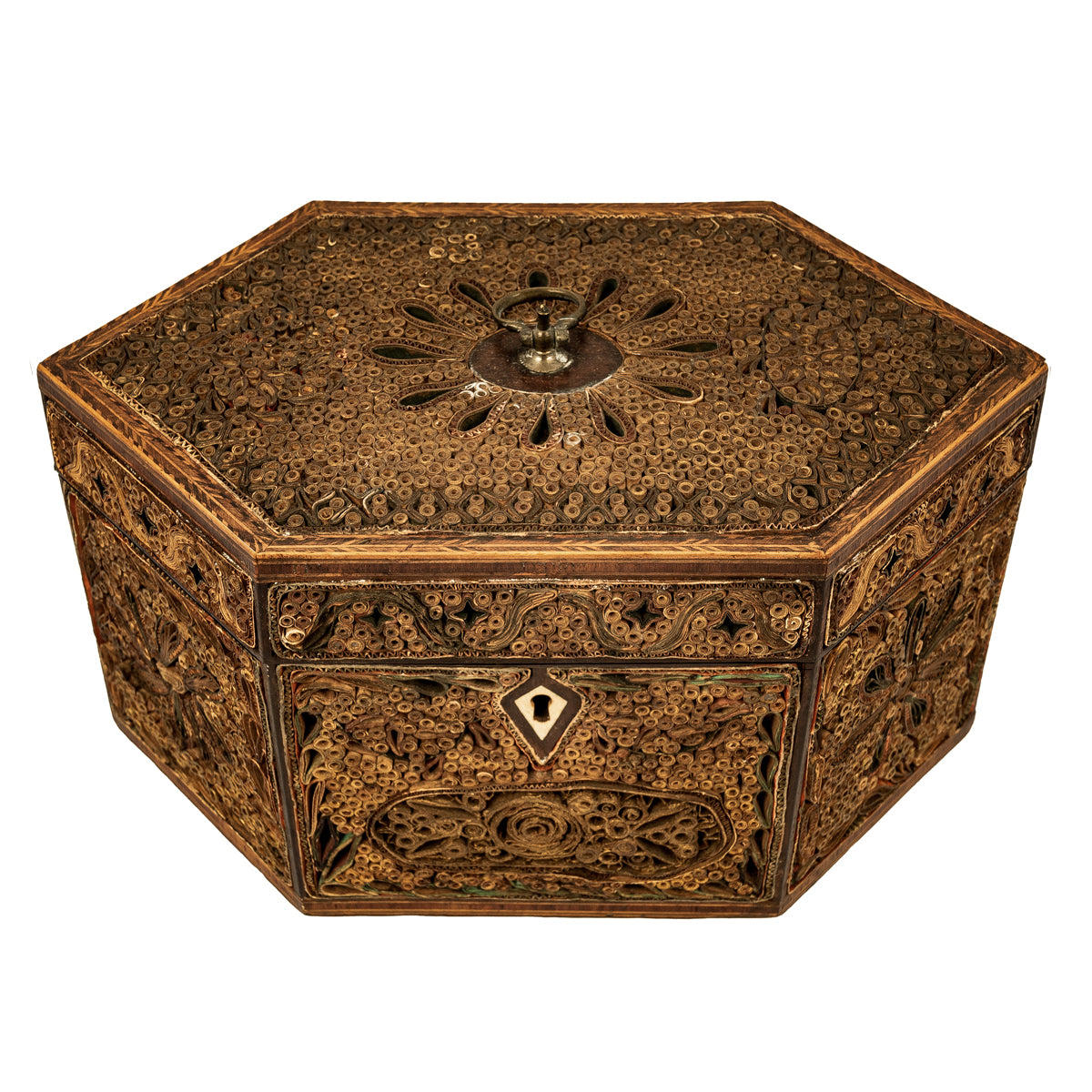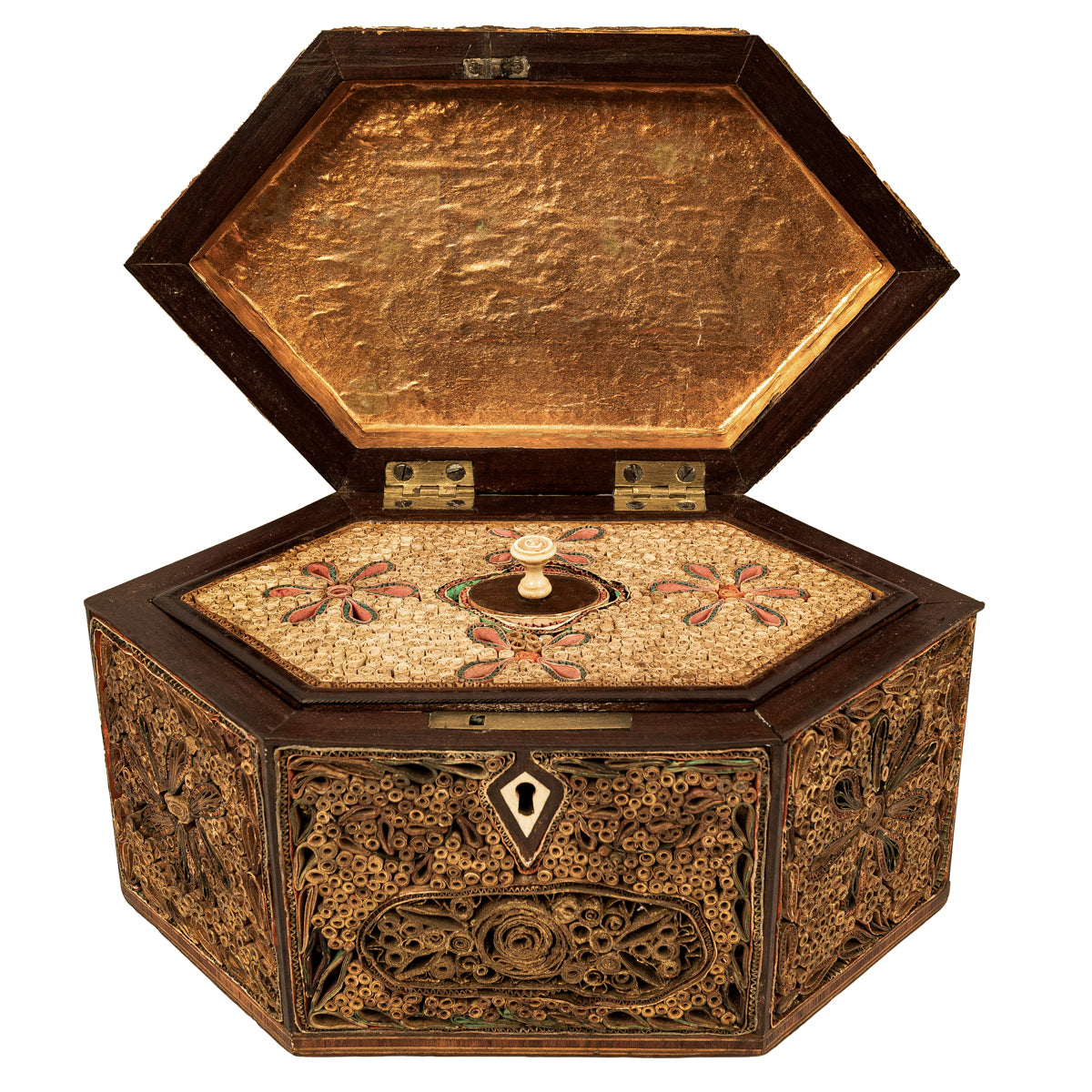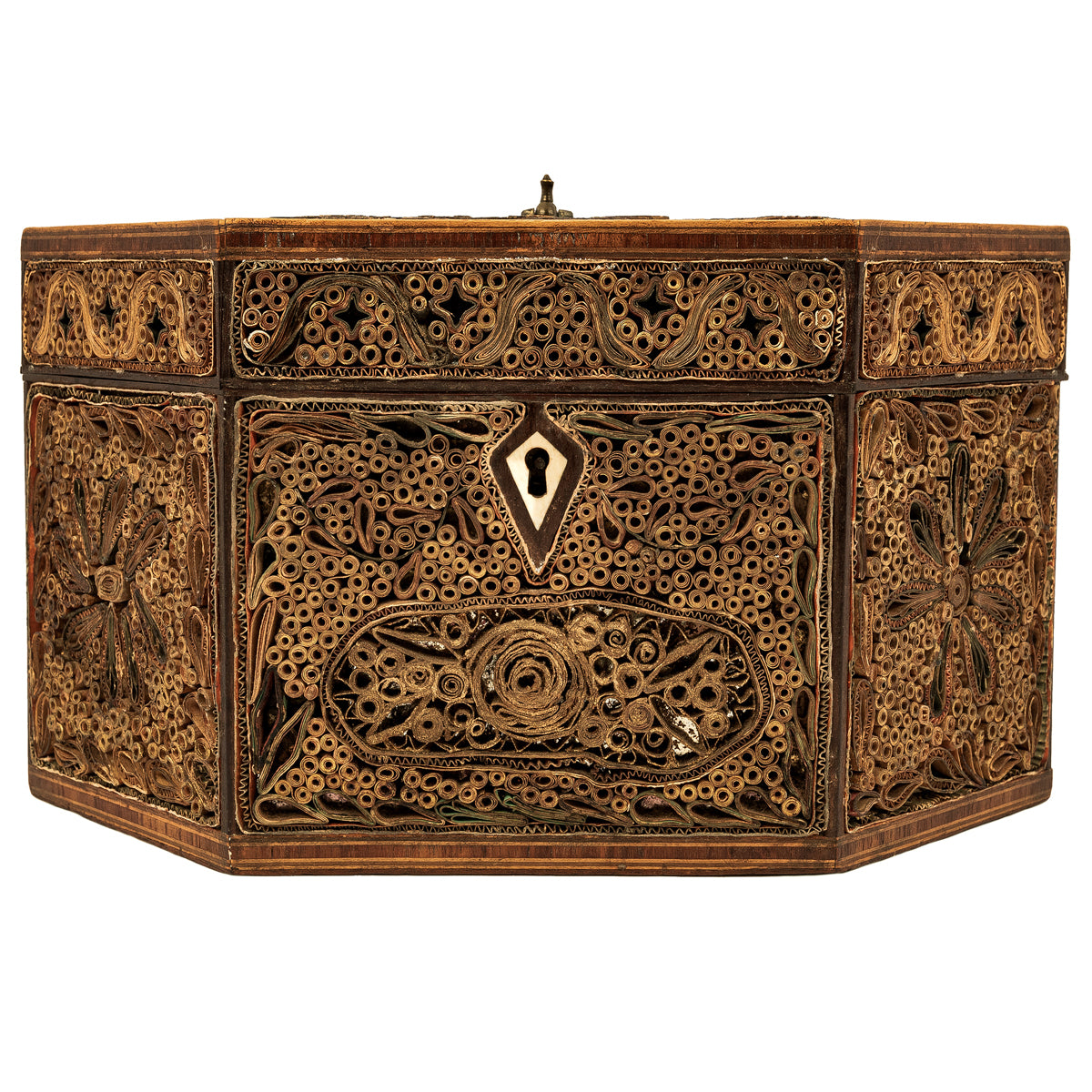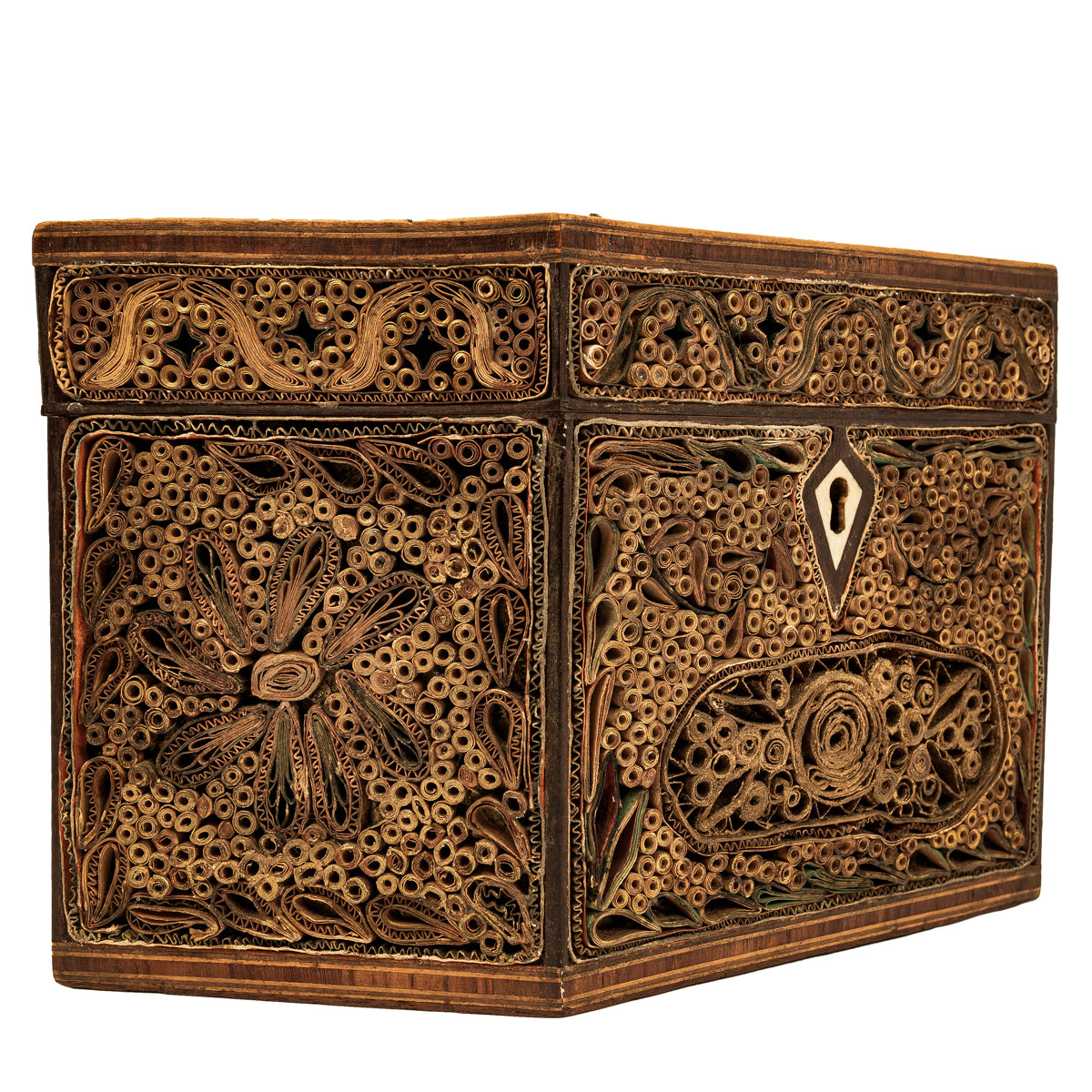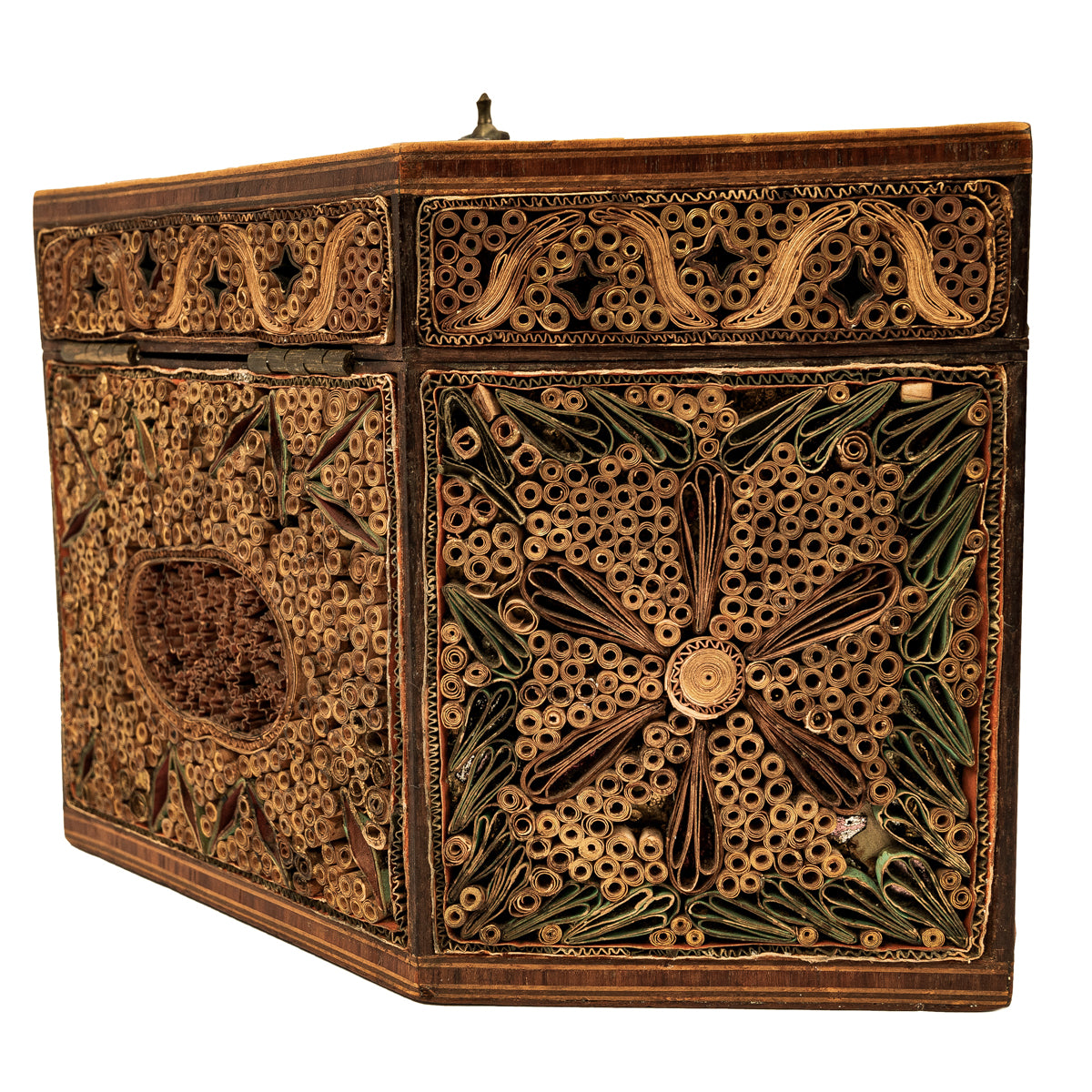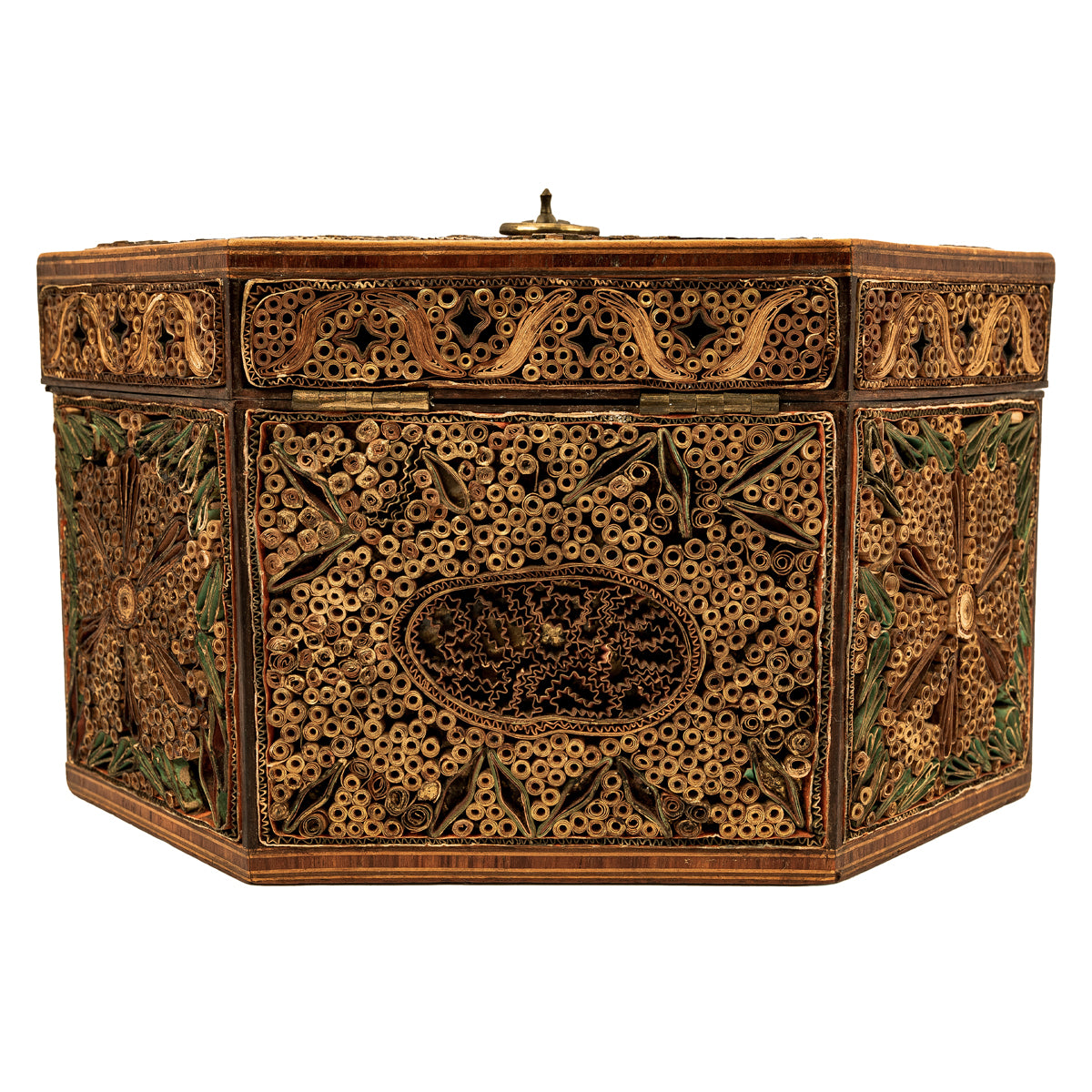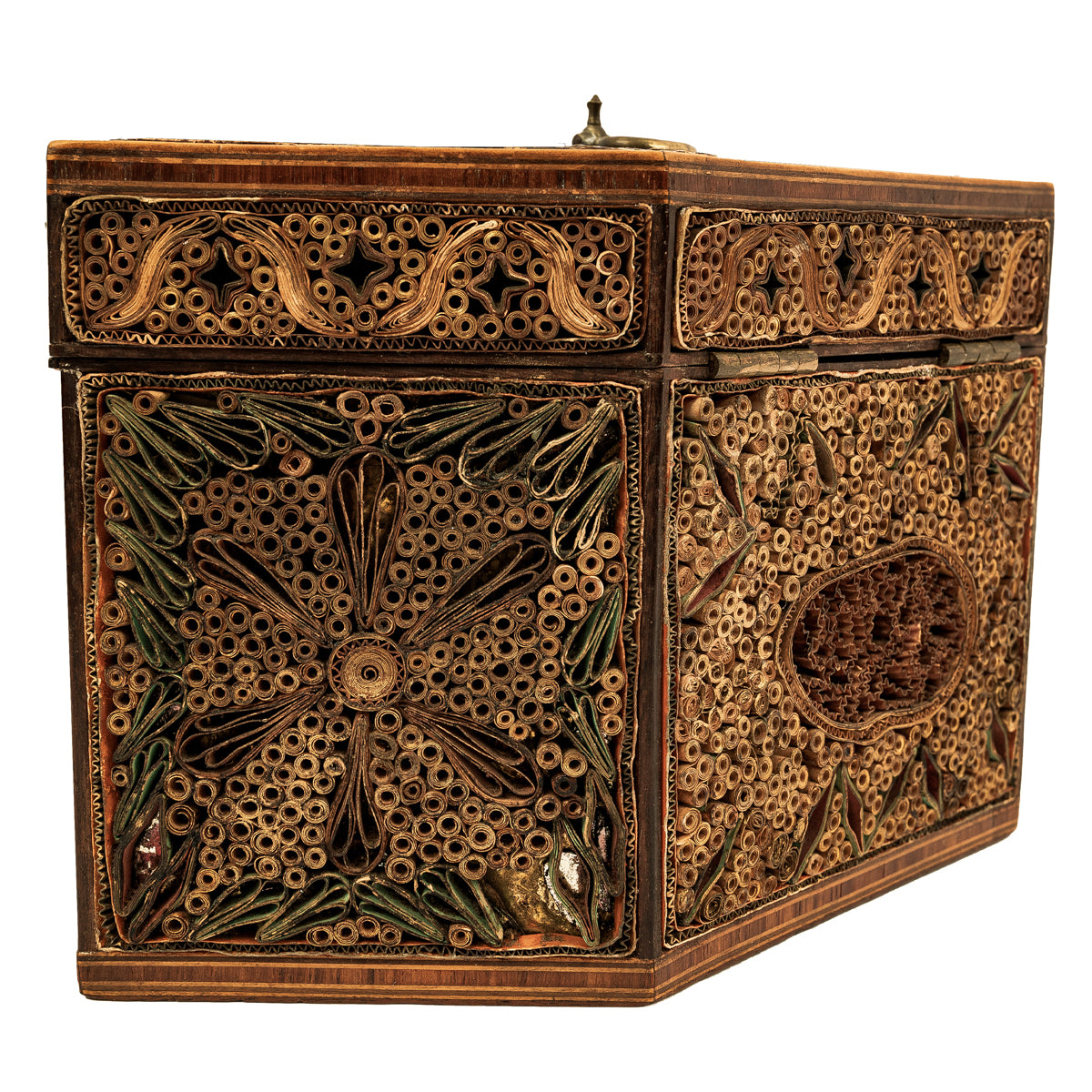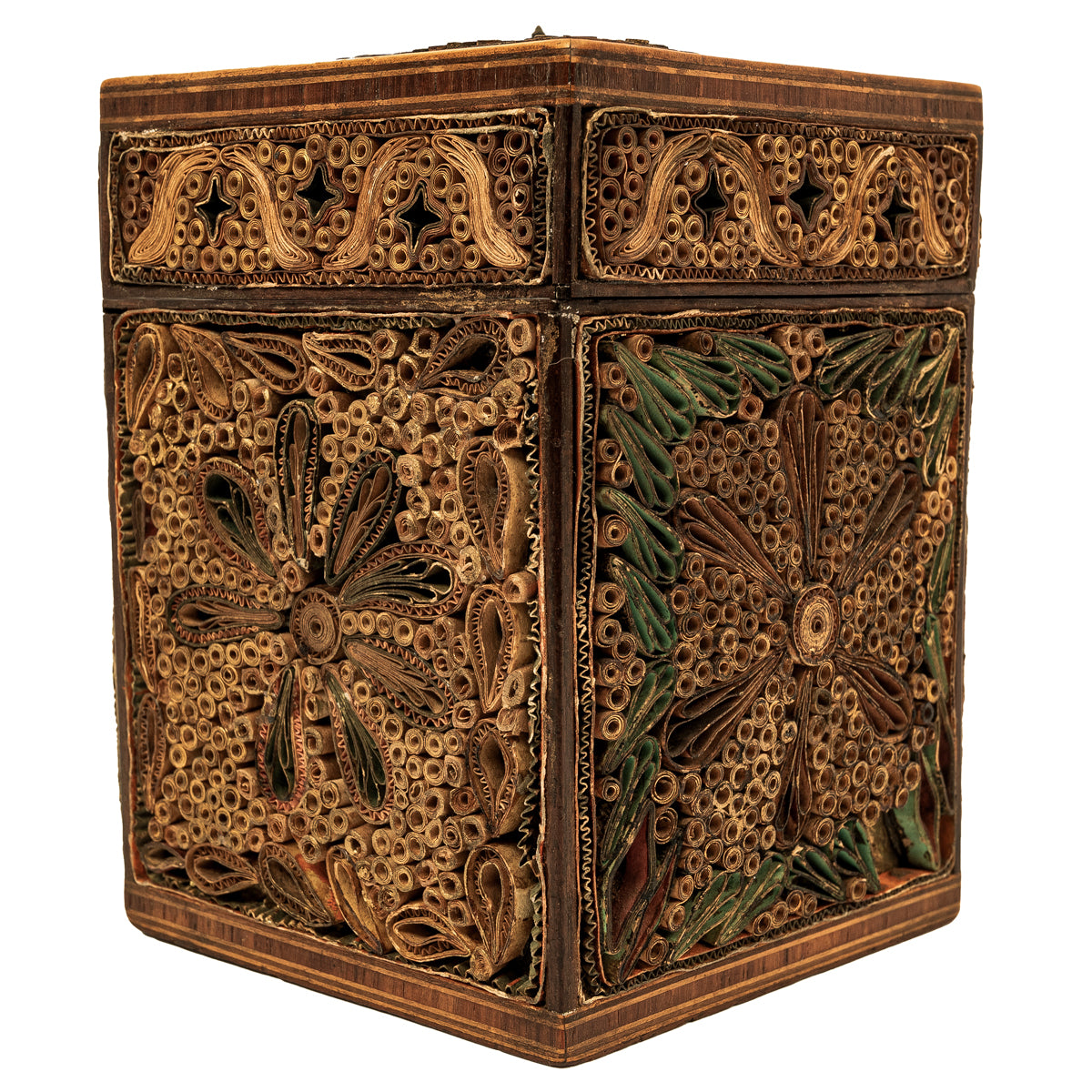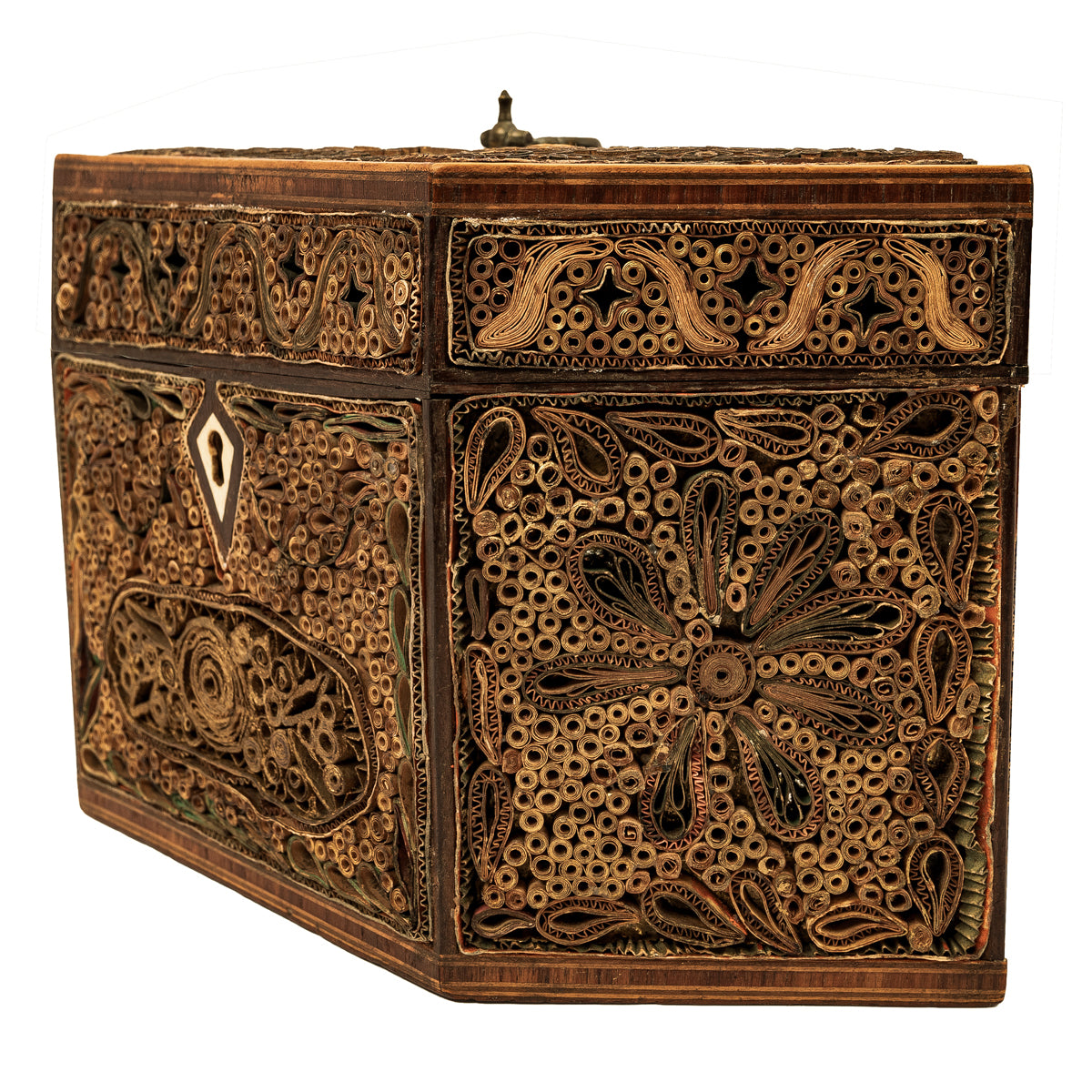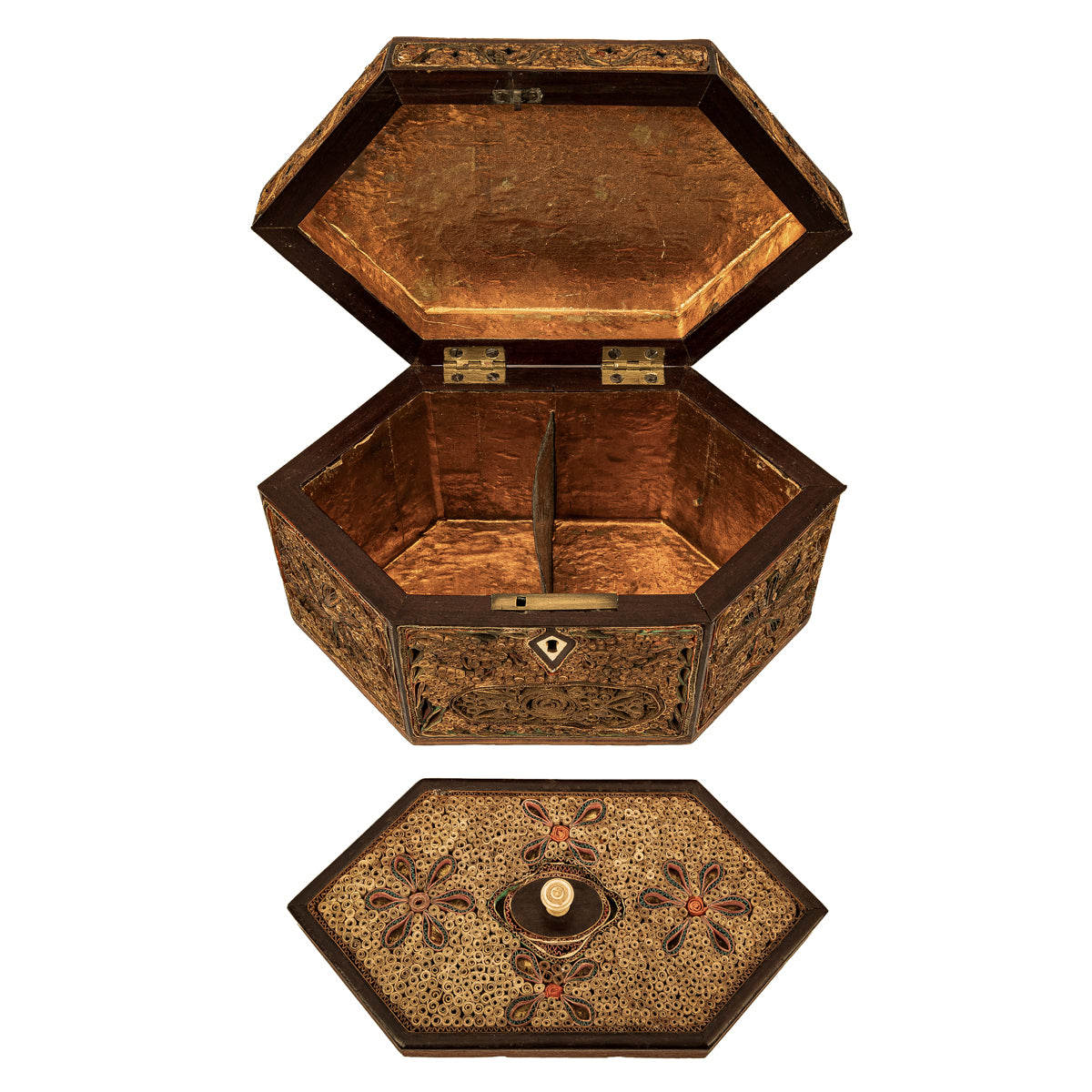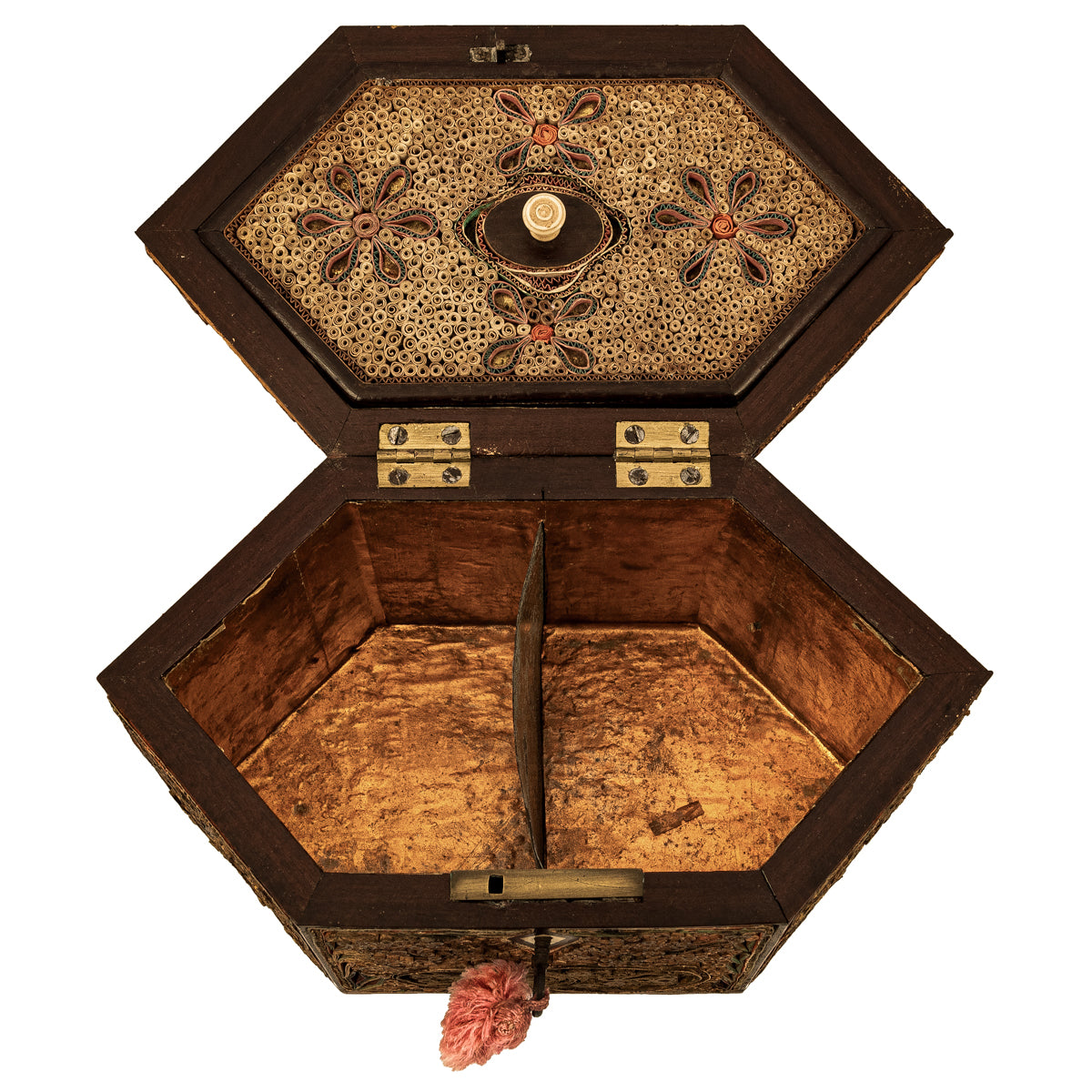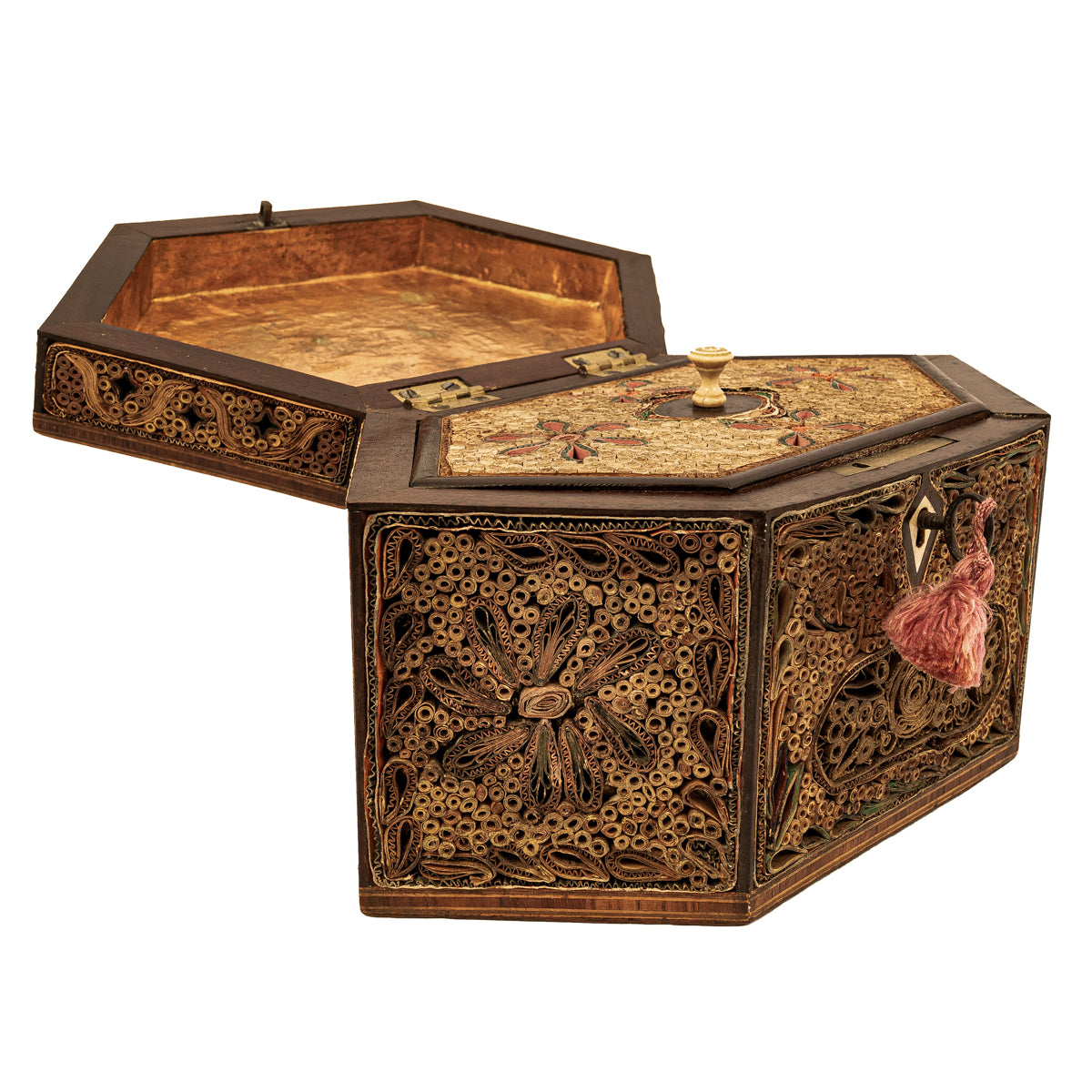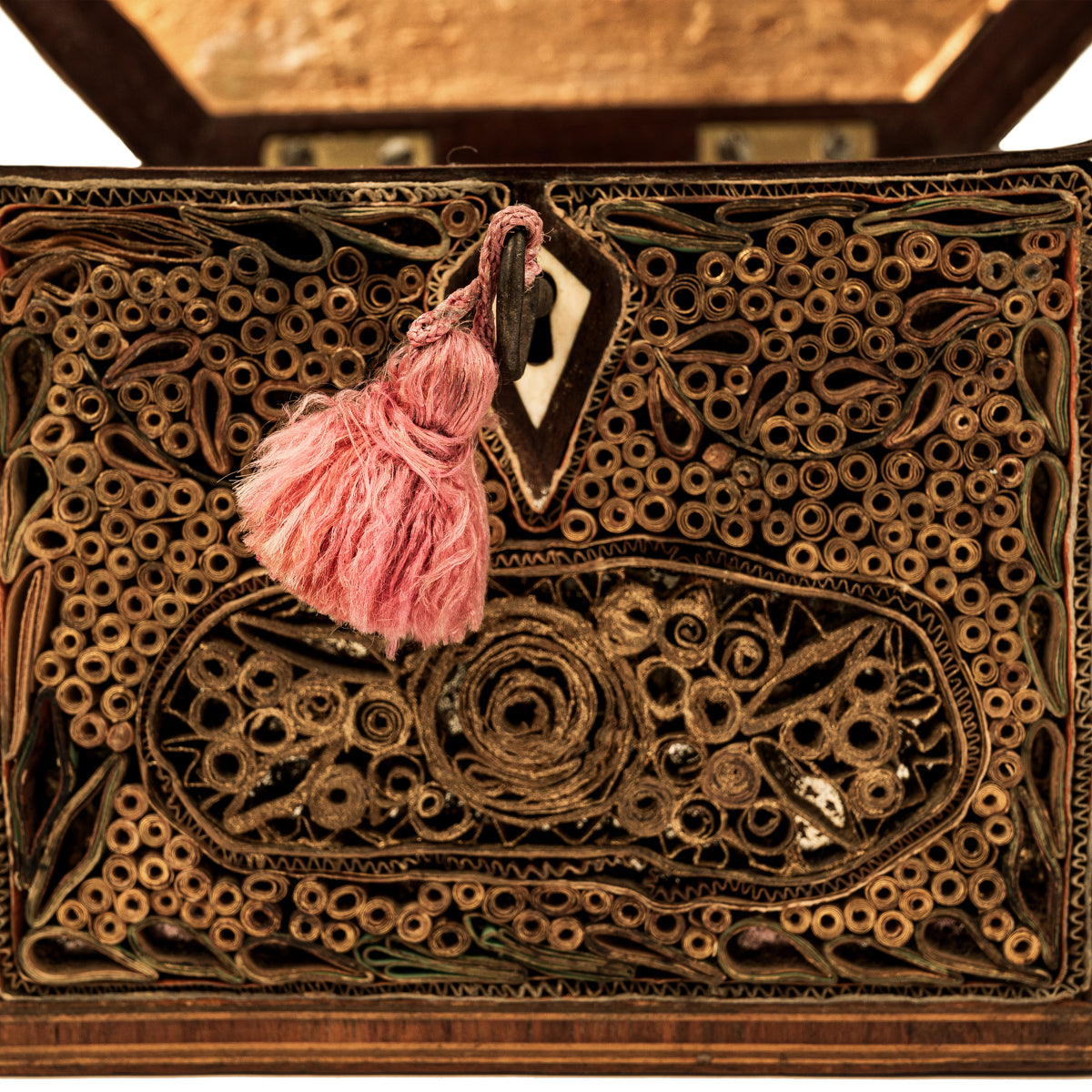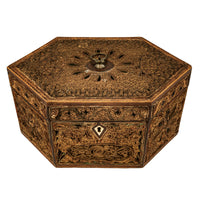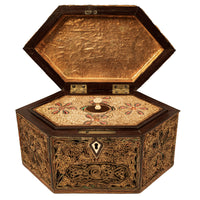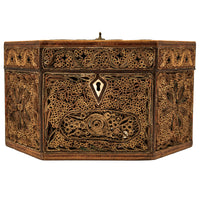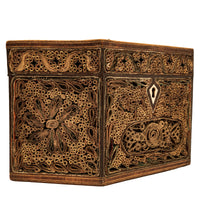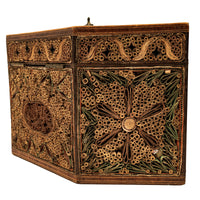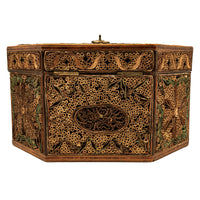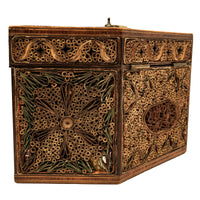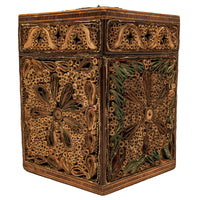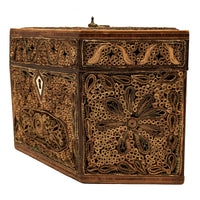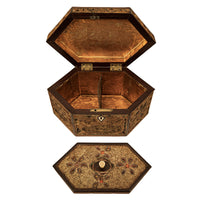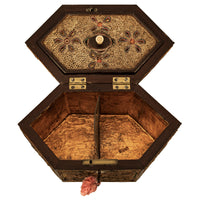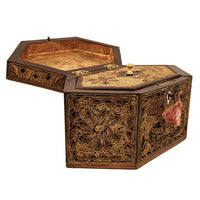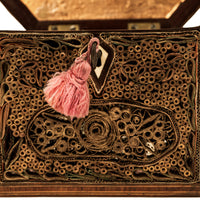Antique 18th Century Georgian Mahoghany Paper Scroll Work Tea Caddy Box 1780
- Regular
- $ 2,795
- Sale
- $ 2,795
- Regular
Sold Out
- Unit Price
- per
SKU
BB-8659
A good antique Georgian scrollwork tea caddy, circa 1780.
The caddy of hexagonal shape, the front, back & cover with overall decoration of paper scrolls in stylized floral & foliate motifs. The caddy having a hinged lid with a turned brass hinged finial pull, the top having chevron shaped inlay, the interior lid also decorated with floral design paper scrollwork & a turned ivory finial pull. Enclosed are twin compartments for storing tea with the original gold leaf lining paper. The front of the caddy having an inlaid diamond shaped ivory lock escutcheon & the original key is present. The caddy is in very good condition.
Paper filigree work was fashionable during the last part of the eighteenth century through to the early part of the nineteenth century. Paper was rolled up to create small coils and then gilded or coloured to simulate metalwork.
The technique was mostly carried out by ladies for amusement or taught at ladies’ schools. In 1786 an account of paper filigree work was published in the New Ladies’ Magazine illustrating stylised floral patterns and borders, palmettes and garlands. See A. Clarke & J. O’Kelly, Antique Boxes, Tea Caddies, & Society 1700-1880, pp.117-118.
The caddy of hexagonal shape, the front, back & cover with overall decoration of paper scrolls in stylized floral & foliate motifs. The caddy having a hinged lid with a turned brass hinged finial pull, the top having chevron shaped inlay, the interior lid also decorated with floral design paper scrollwork & a turned ivory finial pull. Enclosed are twin compartments for storing tea with the original gold leaf lining paper. The front of the caddy having an inlaid diamond shaped ivory lock escutcheon & the original key is present. The caddy is in very good condition.
Paper filigree work was fashionable during the last part of the eighteenth century through to the early part of the nineteenth century. Paper was rolled up to create small coils and then gilded or coloured to simulate metalwork.
The technique was mostly carried out by ladies for amusement or taught at ladies’ schools. In 1786 an account of paper filigree work was published in the New Ladies’ Magazine illustrating stylised floral patterns and borders, palmettes and garlands. See A. Clarke & J. O’Kelly, Antique Boxes, Tea Caddies, & Society 1700-1880, pp.117-118.
Imperial
ches high × ches wide × ches deep
Metric
high × wide x deep
Displayed rates are for shipping in the Continental U.S. and Canada. For other locations, kindly contact us and we will provide the most competitive shipping price available. All shipments are professionally packed and shipped insured with full tracking capabilities. Customers are also welcome to collect their items from our warehouses or arrange their own shipping.

